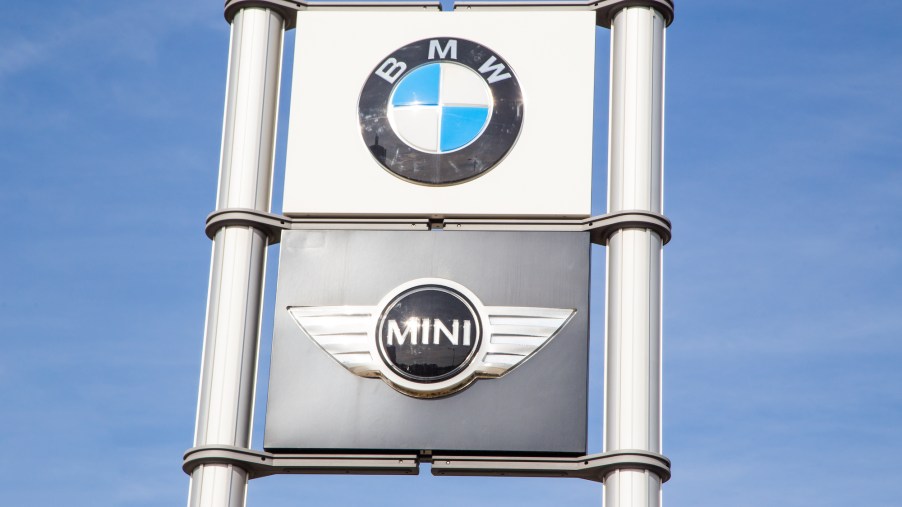
Does BMW Own Mini?
Noticing the United Kingdom’s Union Jack featured in Mini cars’ design, most people probably assume it’s a British company. They’d be partially correct. But with all the buying and selling of brands in the auto industry, Mini’s history isn’t that simple. Though it’s an iconic British brand, it also has German ties. Here’s a look at Mini’s history and how BMW factors into the equation.
Who owns Mini?
BMW Group, headquartered in Germany, owns the Mini brand. The group also owns BMW and Rolls-Royce. So although BMW and Mini have the same parent company, a Mini car is not a BMW vehicle.
Rather than being only a quintessentially British brand, Mini also has German ties. And its biggest plant is located in England, but most vehicles are actually manufactured in the Netherlands. Today, Mini and BMW share platforms, engines, technology, and other components, saving both brands money, BMW Blog reports. The Mini brand also allows BMW Group to sell vehicles at a lower price point than the BMW luxury brand.
Mini’s history
Though Mini is German-owned today, it began in Britain. It started as a model name for the automaker Leyland, East Bay Mini reports. Leyland used the Mini name with two of its brands for the Austin Mini and Morris Mini.
The first Mini cars were first designed in 1959 to be small and fuel-efficient, the Mini website explains. It was a response to rising gas prices and the large cars of the 1950s. The unusual car soon gained popularity amid the British youth culture of the 1960s. John Cooper and Pat Moss began racing the little car and winning that decade.
In 1969, Mini became its own brand under the Rover Group (which had been BL, descended from Leyland). The BMW Group acquired the Rover Group in 1994, including Mini, Rover, Land Rover, and MG. The Rover Group continued producing the Mini until 2000. By then, the BMW Group had sold off the other brands. At the end of the 1990s, the BMW Group developed the next generation of the Mini, released in 2001. At last, it arrived for sale stateside in 2002.
Today, Mini offers several cars. They include a hardtop two-door, a hard-top four-door, the Countryman, the Clubman, a convertible, John Cooper Works performance models, an electric model, and some special editions.
BMW’s history
BMW is short for “Bayerische Motoren Werke GmbH,” which BMW translates as the Bavarian Engine Works Company. The company originally resided in the German state of Bavaria and made engines. It was first known as Rapp-Motorenwerke GmbH, and it made airplane engines in 1913 and for Germany during World War I. The name changed to Bayerische Motoren Werke GmbH in 1917.
The Treaty of Versailles that ended World War I also prevented German companies from manufacturing airplane engines. Because of this, BMW switched to railway brakes and built-in motors. The railway brakes were so successful that, for a while, the company was known by its brakes brand, Knorr-Bremse AG.
In 1922, and the company became BMW, Bayerische Motoren Werke AG. It began making motorcycles the following year, Bloomberg reports, and cars in 1928. During World War II, the company supplied airplane engines and motorcycles to the Nazi military, according to Reference for Business. BMW didn’t return to car manufacturing until 1951, and it took some time to be successful.
It may be a surprise that Mini’s parent company is the German BMW Group, but they both have long histories and a symbiotic relationship.


